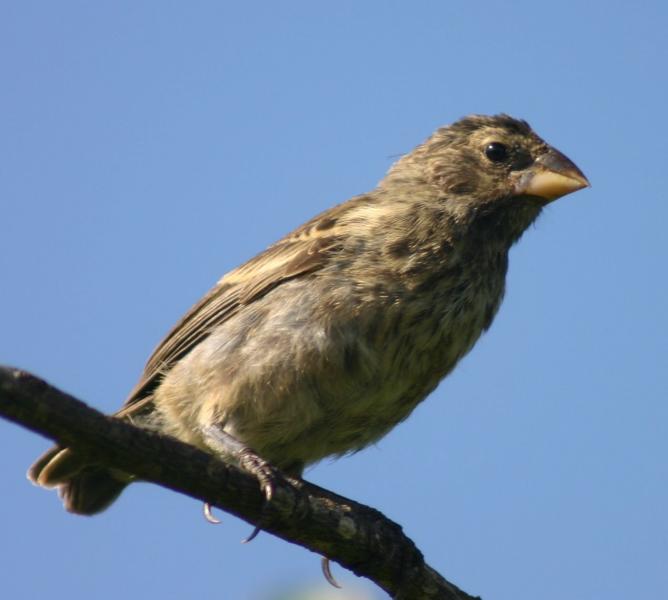Evolution of New Species?
Genesis 1:21
“And God created great whales, and every living creature that moveth, which the waters brought forth abundantly, after their kind, and every winged fowl after his kind: and God saw that it was good.”
 It was Charles Darwin’s assumption that new species arose from previous ones by a process of natural selection. Darwin famously illustrated this point by reference to the various species of finch living on the Galapagos Islands.
It was Charles Darwin’s assumption that new species arose from previous ones by a process of natural selection. Darwin famously illustrated this point by reference to the various species of finch living on the Galapagos Islands.
Darwin’s finches recently received a new airing when a study about a new finch species appearing on the island of Daphne Major was published. Prior to the study, the island had three species of finch. A new bird was observed, which was larger than members of the existing species. Later genetic testing indicated that the bird had come from Española island, 62 miles to the southeast. Because this new bird had no other member of its species with which to mate, it mated with a bird from one of the existing species. The offspring of this so-called “Big Bird Lineage” was followed for six generations. After only two generations, sufficient changes were seen for a new species to be defined. A popular science website comments on these reports, stating, “The majority of these lineages have gone extinct but some may have led to the evolution of contemporary species.”
The problem is that the word evolution is here describing the change of species within an animal kind. This is not what we really mean by evolution when we expect to see new genetic information formed. What we have actually seen is finches changing into finches. Such variations within a kind are normal and biblically expected. This is not genuine Darwinian evolution.
Thank You, Lord, that Your word is true and that all that we study in science makes sense in the light of Your word. Amen.
Author: Paul F. Taylor
Ref: Princeton University. (2017, November 24). New species can develop in as little as two generations, Galapagos study finds. ScienceDaily. Retrieved November 25, 2017 from www.sciencedaily.com/releases/2017/11/171124084320.htm. Image: Female resident finch from Daphne Major, License: Creative Commons Attribution Share-Alike 3.0 Unported.